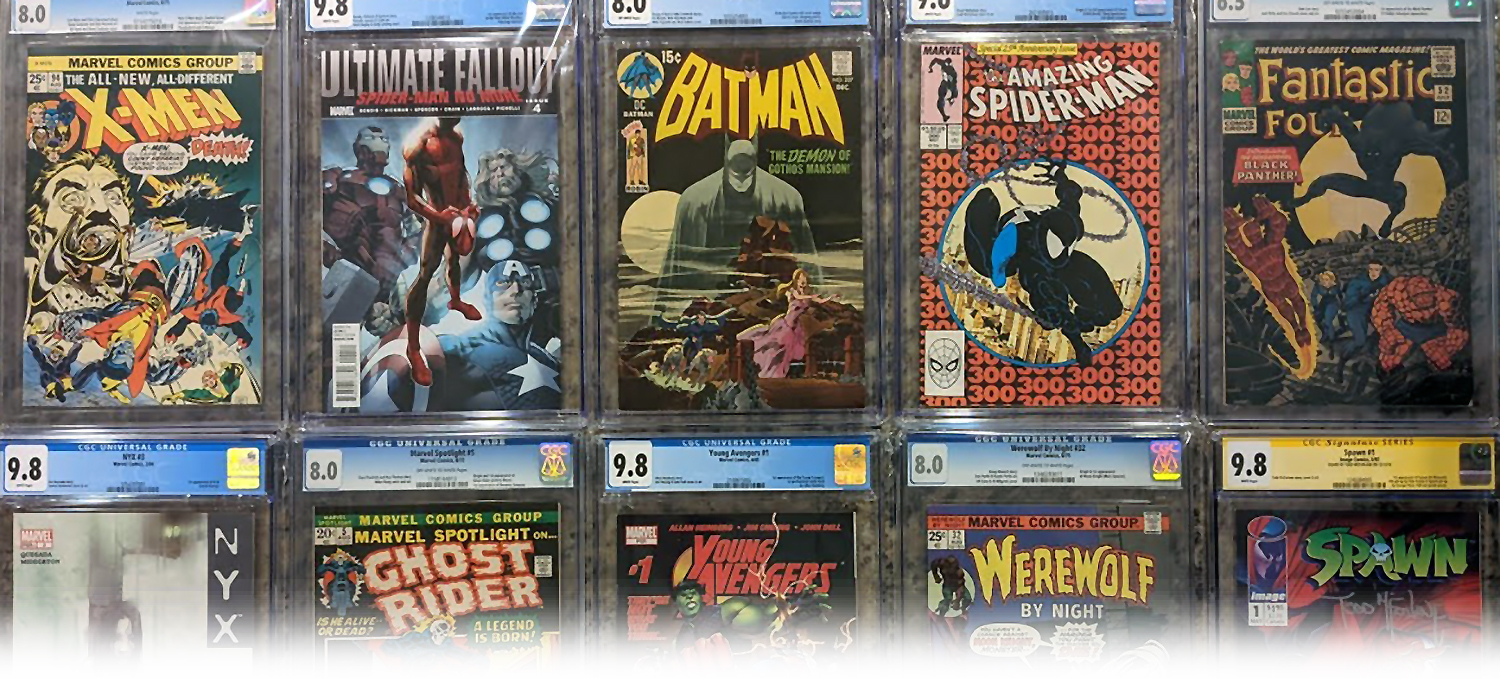
Newsstand or Direct?
In the late 1970s, the comic book industry began adopting technological advancements in retailing and inventory management. The introduction of barcodes was a transformative change, revolutionising the distribution and sale of comics. The first barcoded Newsstand Edition comics surfaced in 1976, driven by retailers’ need to streamline sales tracking and inventory management. Marvel Comics spearheaded this initiative by placing barcodes on the covers of their Newsstand Editions in early 1976, starting with Amazing Spider-Man #157 and several other titles.
DC Comics followed suit later that year, incorporating barcodes into their Newsstand distribution. From 1976 through the early 1980s, all comics sold through Newsstand distribution featured barcodes. This period marked a pivotal phase when Newsstand Editions were standard, and barcodes became a common feature on comic covers. This innovation modernised retail processes and enhanced distribution efficiency.
The Revenge of Direct Editions
As the 1980s unfolded, the comic book industry began to see the emergence of Direct Editions—comics sold directly to specialty comic book stores, bypassing traditional Newsstand distribution networks. By 1982, the market had evolved to include Newsstand and Direct Editions, each with distinct characteristics. While Newsstand Editions maintained their barcodes, Direct Editions—targeted towards collectors and specialty shops—often omitted them. Instead, they displayed unique artwork or logos where the barcode would typically appear, facilitating easier identification for collectors.
Who Sells More?
Initially, Newsstand Editions dominated the market, representing approximately 80-90% of all comic book sales. However, the balance shifted as comic book shops grew and the Direct Market expanded. By the late 1980s, Direct Editions made up about 50% of the market. This trend continued into the 1990s, with Direct Editions overtaking Newsstand sales, which fell to less than 15% by the early 2000s. By 2013, Newsstand Editions comprised a mere 1% of the market, leading to their eventual discontinuation.
Barcodes on Strike
In the late 1990s, Marvel and DC Comics faced overstock concerns with their Newsstand Editions. Retailers returned unsold copies, which were often scheduled for destruction. Both publishers implemented a novel strategy to reduce waste and reclaim value: the strikethrough barcode. Strikethrough barcodes allowed publishers to reissue unsold Newsstand copies into the Direct Market without devaluing existing Direct Editions. A line or strike through the barcode marked these reissued comics, indicating their status as discounted Newsstand copies. This approach enabled publishers to clear excess stock while maintaining clear distinctions for collectors. Today, strikethrough barcoded comics constitute a unique category of collectibles, often sparking curiosity among enthusiasts. They represent a specific period and strategy in the comic book industry’s history, with their rarity and condition affecting collector demand.
Which Option is Worth More?
Newsstand Editions are often valued higher than Direct Editions due to various factors, including rarity, condition, and collector demand. As the industry transitioned towards Direct Editions, the print runs for Newsstand Editions decreased. By the mid-1980s, Direct Editions became the dominant format, and by 2013, they made up less than 1% of the market, resulting in increased scarcity and desirability among collectors. Direct Editions, sold primarily to specialty stores and collectors, were better preserved. Conversely, Newsstand Editions, sold in general retail environments, were frequently mishandled and subject to damage. This disparity led to fewer high-grade Newsstand Editions surviving over time.
Newsstand comics were often placed in magazine or spinner racks, where they experienced frequent handling and wear. Their distribution journey further increased their vulnerability to damage. Unsold Newsstand comics were returnable to publishers and often destroyed. Reissuing them with strikethrough barcodes further decreased the number of pristine Newsstand Editions available. The rarity of high-grade Newsstand Editions makes them particularly sought after. Collectors often look for these uncommon variants, contributing to their market value. Key issues or first appearances in Newsstand Editions can be especially prized due to their scarcity and historical context. The apparent visual differences between Newsstand and Direct Editions—such as barcodes versus logos—allow collectors to quickly identify and differentiate these variants.
What does it all mean?
The history of Newsstand Edition comics, particularly those featuring barcodes, provides a fascinating insight into the changing landscape of comic book distribution. From their introduction in 1976 to their peak and subsequent decline, these editions have played a vital role in shaping how comics reach readers. The coexistence of Newsstand and Direct Editions catered to diverse market segments, while innovations like strikethrough barcodes highlighted the industry’s adaptability. For collectors, these comics are more than just ink and paper; they serve as tangible artifacts chronicling the growth and transformation of an entire industry.
